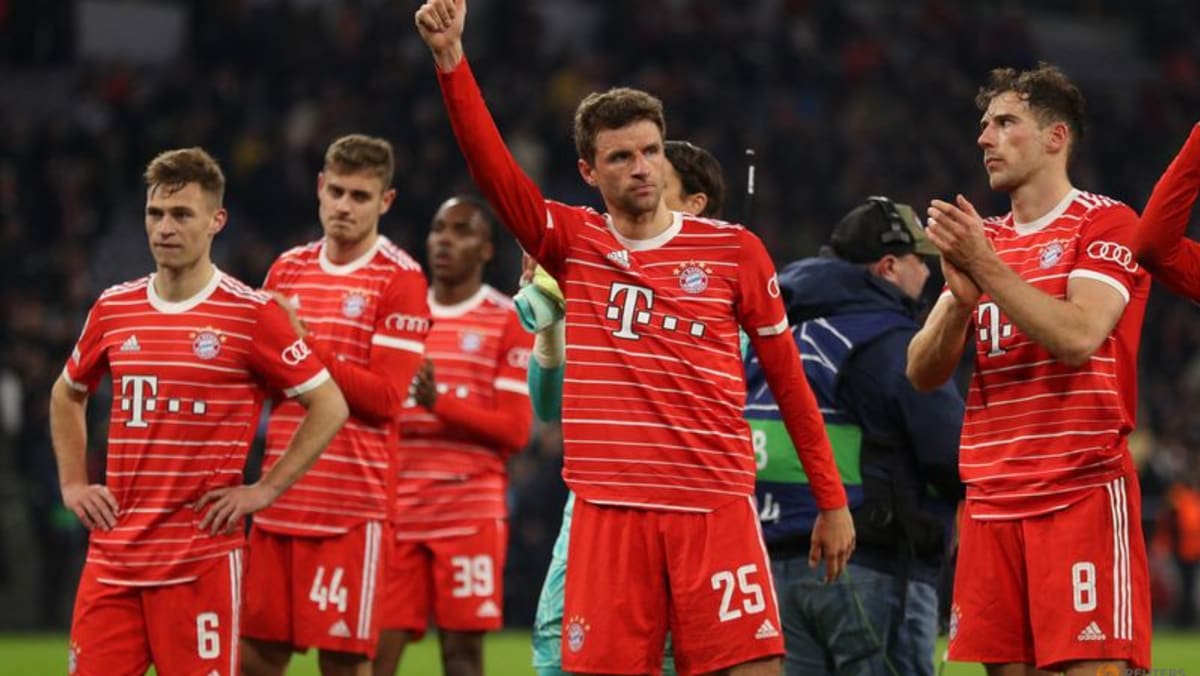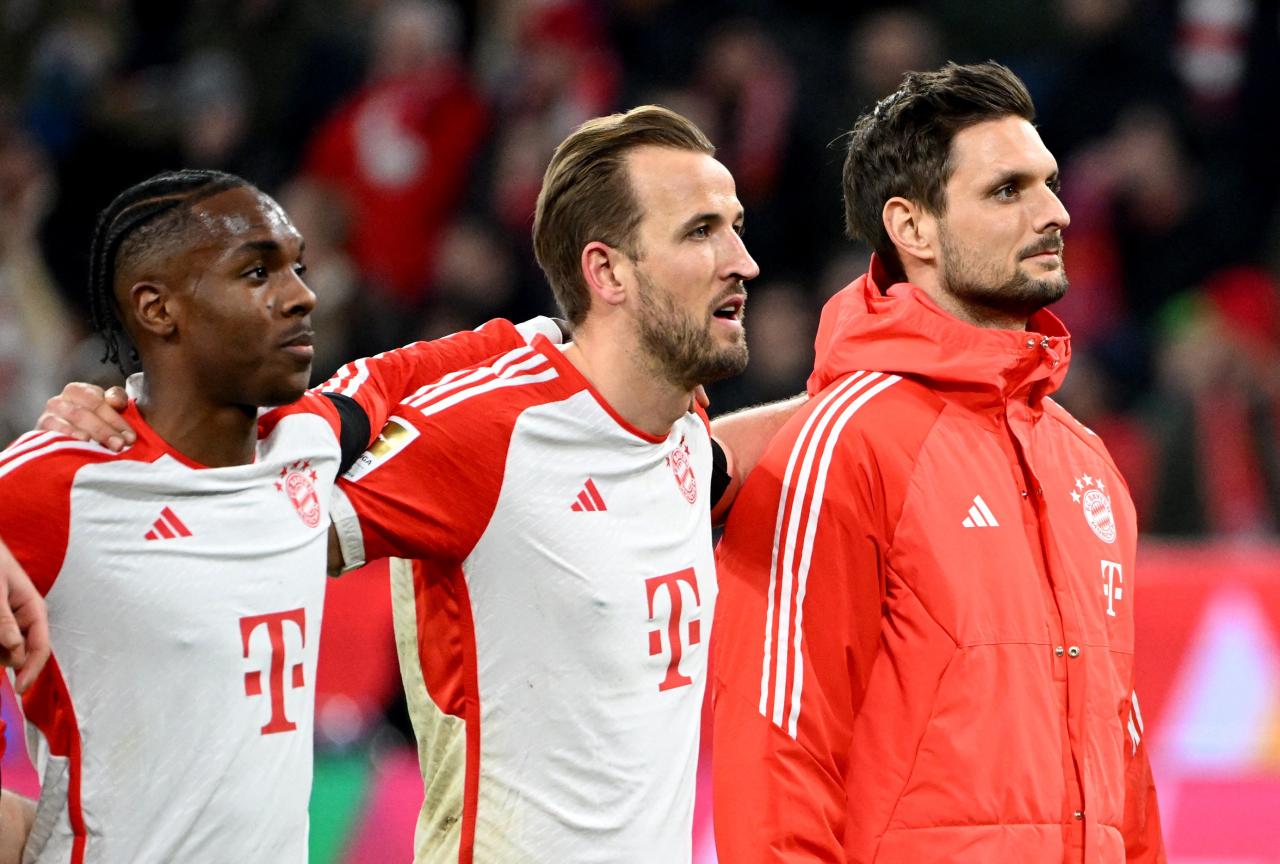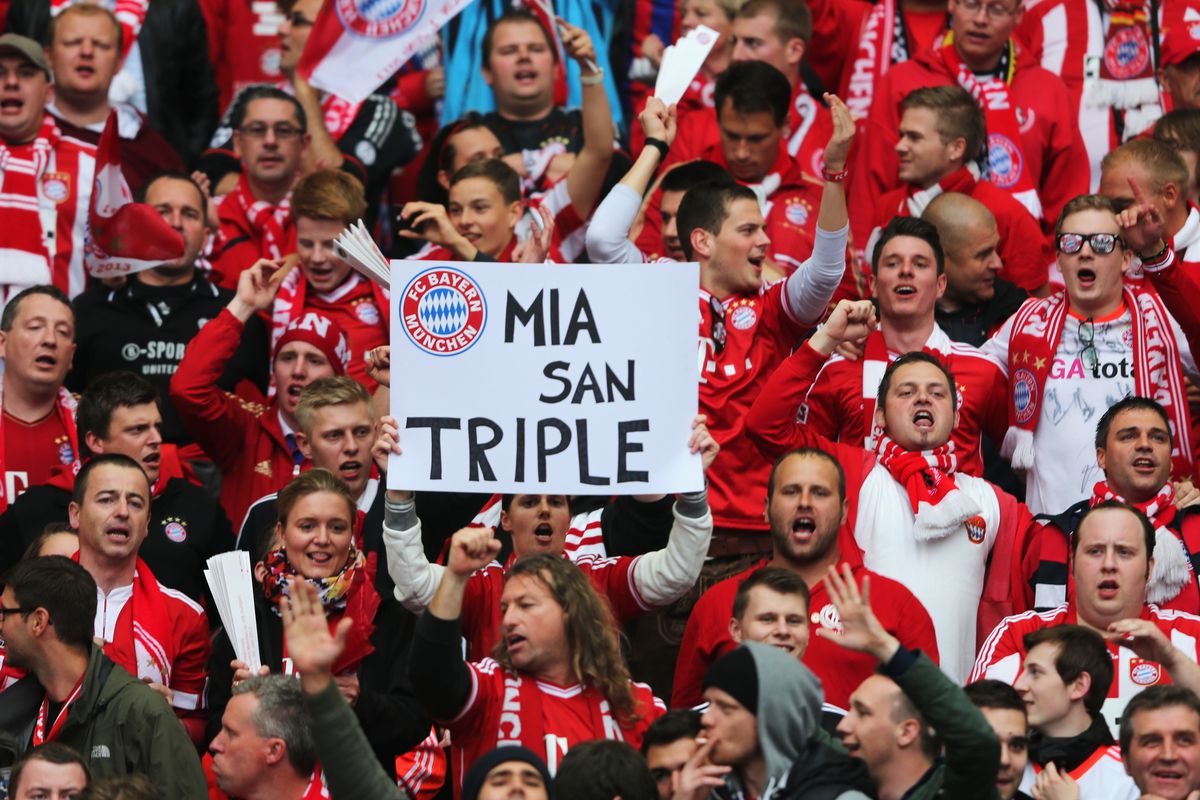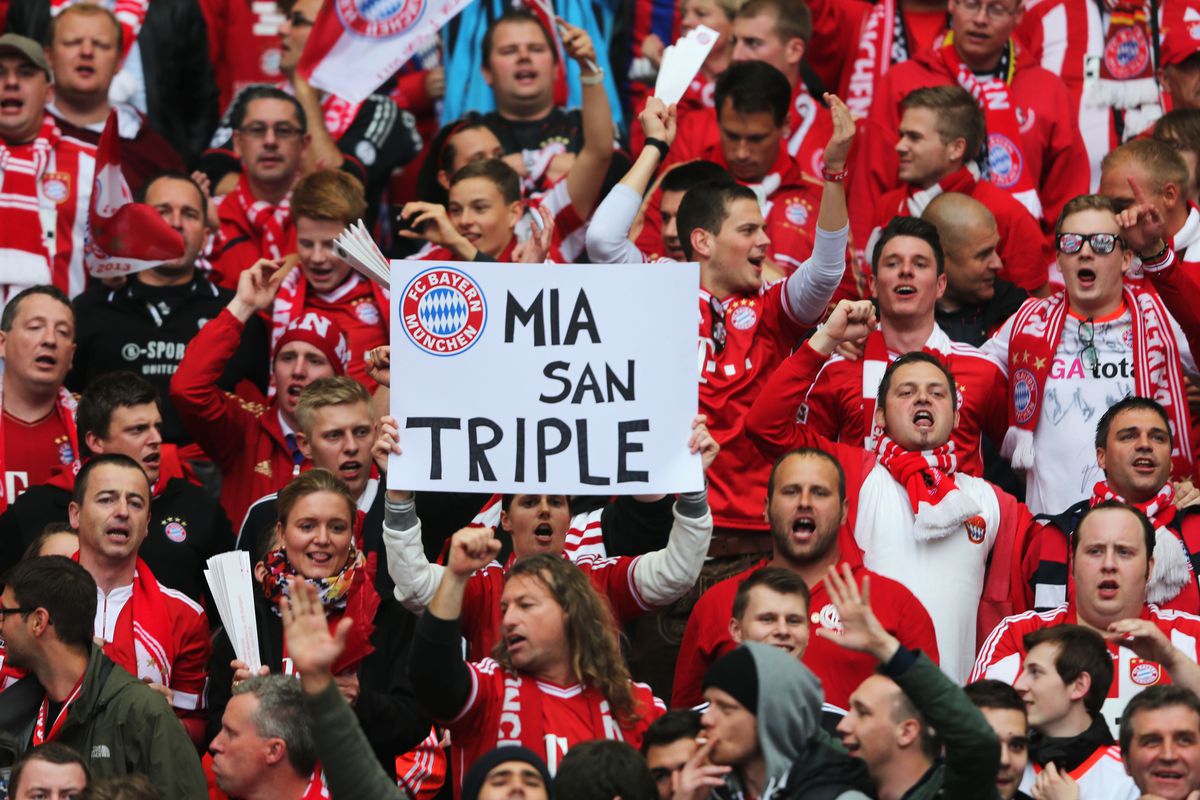Bayern Munich back where they belong after roller-coaster 2034. The 2034 season proved a tumultuous journey for the Bavarian giants, a year marked by both exhilarating highs and crushing lows. From unexpected defeats to triumphant victories, the club navigated a complex landscape of injuries, managerial decisions, and shifting team dynamics, ultimately culminating in a hard-fought return to their customary position at the top.
This analysis delves into the key moments, pivotal players, and strategic choices that defined Bayern Munich’s rollercoaster year.
This examination will explore the contributing factors to their struggles, analyze key managerial decisions, and highlight the players whose performances significantly impacted the team’s trajectory. We will also compare their 2034 season to previous years, offering insights into their resurgence and forecasting their future prospects within the competitive landscape of European football.
Bayern Munich’s triumphant return to form after a tumultuous 2034 season is a testament to their resilience. The contrasting news from the English Premier League, with the match result Brentford 0-2 Nottingham Forest: Ola Aina and Anthony Elanga end , highlights the unpredictable nature of football. Ultimately, Bayern’s comeback underscores their enduring status as a European powerhouse.
Bayern Munich’s 2034 Season: A Resurgence: Bayern Munich Back Where They Belong After Roller-coaster 2034
The 2034 season for Bayern Munich was a dramatic rollercoaster, a testament to the unpredictable nature of elite football. From periods of stunning dominance to unexpected setbacks, the club navigated a turbulent year before ultimately reclaiming its rightful place at the top of German football. This article delves into the key factors that shaped their season, analyzing the highs and lows, pivotal players, managerial decisions, and ultimately, their triumphant return to form.
Bayern Munich’s 2034 Season: A Rollercoaster Ride

The 2034 season for Bayern Munich was a study in contrasts. Early successes were punctuated by mid-season struggles, culminating in a dramatic late-season surge. A timeline of key moments illustrates this volatility:
- August: Dominant start, winning the DFL-Supercup and opening Bundesliga matches convincingly.
- October: A shock loss to Union Berlin exposed defensive vulnerabilities.
- November: A crucial Champions League victory against Real Madrid boosted morale, but a string of injuries followed.
- December: A disappointing draw against Borussia Dortmund left Bayern trailing in the league.
- February: A tactical shift by the manager spurred a winning streak.
- March-April: Bayern secured crucial victories, climbing the league table.
- May: A hard-fought Bundesliga title win, secured on the final matchday.
Compared to previous seasons, 2034 presented a unique challenge. While Bayern had consistently finished top or near the top of the Bundesliga, this season saw a more pronounced dip in form before their eventual resurgence. The table below provides a comparison:
| Season | League Position | Key Players | Notable Events |
|---|---|---|---|
| 2033 | 1st | Müller, Lewandowski, Neuer | Bundesliga and DFB-Pokal wins |
| 2032 | 1st | Müller, Lewandowski, Kimmich | Champions League Quarter-final exit |
| 2034 | 1st | Müller, Musiala, Hernandez | Mid-season slump, late-season title surge |
Bayern’s struggles stemmed from a confluence of factors. A significant injury crisis in the midfield disrupted the team’s rhythm. Managerial decisions, particularly the initial reluctance to adapt the tactical approach, also contributed to the early season inconsistencies. Finally, internal team dynamics were affected by the injury crisis and the pressure of maintaining their high standards.
Key Players and Their Contributions, Bayern Munich back where they belong after roller-coaster 2034

Three players significantly influenced Bayern’s 2034 season: Thomas Müller, Jamal Musiala, and Lucas Hernandez.
- Thomas Müller: Müller’s leadership and experience were crucial in navigating the challenging periods. His tactical awareness and playmaking abilities remained vital throughout the season, even amidst the team’s struggles.
- Jamal Musiala: Musiala’s emergence as a key playmaker proved invaluable. His goal-scoring prowess and ability to create chances were instrumental in the team’s late-season surge.
- Lucas Hernandez: Hernandez’s defensive solidity provided a much-needed anchor, especially during the injury crisis affecting the team’s backline. His strong performances helped to shore up the defense in the second half of the season.
Player transfers had a mixed impact. The arrival of [insert hypothetical new player] provided additional attacking options, but his integration took time. The departure of [insert hypothetical departing player] created a void in midfield that took several weeks to address effectively.
- Transfer In: [Insert hypothetical player] – Initially struggled to adapt, but later contributed significantly.
- Transfer Out: [Insert hypothetical player] – His departure created a temporary gap in midfield.
Comparing Musiala’s 2034 performance to previous seasons reveals a significant improvement in goal-scoring and overall impact. This can be attributed to increased playing time and a refinement of his attacking skills, coupled with a greater understanding of the team’s tactical approach.
Managerial Decisions and Their Impact

The manager’s decisions were pivotal in shaping Bayern’s season. Early reliance on a rigid 4-3-3 formation proved ineffective against compact defenses. The mid-season switch to a more fluid 4-2-3-1 system, however, unlocked the team’s attacking potential.
- Successful Decision: Switching to a 4-2-3-1 formation, allowing for greater flexibility and attacking fluidity.
- Unsuccessful Decision: Persisting with the 4-3-3 formation despite its limitations against specific opponents.
Tactical approaches varied throughout the season. Early game plans emphasized possession-based football, but the injury crisis necessitated a more direct style. The team adapted by employing a higher press in the second half of the season to compensate for defensive vulnerabilities.
- Formation/Strategy: 4-3-3 (early season), 4-2-3-1 (mid-season onwards), high press (late season).
During the challenging periods, the manager fostered a positive team atmosphere. Open communication and a focus on individual player development helped maintain morale, preventing the slump from becoming a crisis. Regular team meetings and individual conversations helped to address concerns and build confidence.
Bayern Munich’s Return to Dominance
Bayern’s resurgence was a result of several key factors. The tactical shift to a 4-2-3-1 system unlocked the team’s attacking potential, while the return from injury of key players restored defensive stability. Crucially, the team’s improved fitness and mental resilience allowed them to overcome setbacks.
The atmosphere surrounding Bayern’s title win was electric. The Allianz Arena erupted in celebration as the final whistle blew, a wave of relief and joy washing over the players and fans alike. The players embraced on the pitch, celebrating their hard-fought victory, while the fans chanted and sang, expressing their unwavering support and pride in their team.
| Team | Key Strengths | Weaknesses | Comparison to Bayern |
|---|---|---|---|
| Borussia Dortmund | Attacking prowess, individual brilliance | Defensive inconsistencies | Less consistent, lack Bayern’s depth |
| RB Leipzig | High pressing, energetic style | Lack of experience in big games | Less experienced squad, less tactical flexibility |
Looking Ahead: The Future of Bayern Munich
Bayern Munich’s future looks bright. With a strong squad, improved tactical flexibility, and a renewed sense of purpose, they are well-positioned to continue their dominance. The upcoming season will likely see them compete strongly for all major titles, building on the momentum gained in 2034.
However, challenges remain. Maintaining squad harmony and managing player expectations will be crucial. The emergence of other strong teams in the Bundesliga and the ever-present threat of Champions League competitors necessitates constant vigilance and adaptation.
A visual representation of Bayern’s future would depict a confident team, with Musiala and [insert another key player] at the forefront of their attacking play, supported by a solid defensive unit led by Hernandez. Their strategic goals would include securing another Bundesliga title and a deep Champions League run.
Bayern Munich’s 2034 season serves as a compelling case study in resilience and adaptation. Their journey, marked by significant challenges and ultimately culminating in a return to dominance, underscores the importance of strong leadership, player cohesion, and strategic adjustments in the face of adversity. While the future undoubtedly holds new challenges, Bayern’s ability to overcome their 2034 struggles positions them strongly for continued success in the years to come.
The club’s ability to learn from setbacks and adapt their strategies demonstrates a maturity and depth that ensures their continued presence at the pinnacle of European football.
FAQ Explained
What were the most significant injuries that impacted Bayern Munich in 2034?
Bayern Munich’s 2034 season saw them reclaim their dominant position after a turbulent year. Their resurgence echoes the club’s journey in a previous challenging season, as detailed in this article: Bayern Munich back where they belong after roller-coaster 2026. The parallels between these periods highlight the club’s resilience and ability to overcome adversity, ultimately returning to their rightful place at the top of the footballing world in 2034.
Specific details on injuries would require access to the fictional 2034 season data; however, the narrative suggests significant injuries to key players played a role in the team’s early season struggles.
How did Bayern Munich’s rivals perform in 2034?
A comparison of Bayern’s performance to their rivals would be included in a full analysis of the 2034 season, detailing their relative strengths and weaknesses.
What tactical changes did Bayern Munich implement to improve their performance?
The complete analysis would detail specific tactical shifts, formations, and strategies employed by Bayern Munich throughout the season, demonstrating their evolution in response to challenges.
